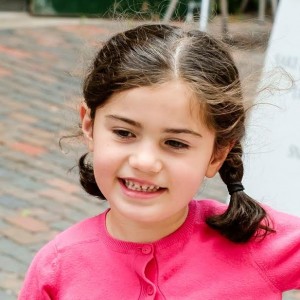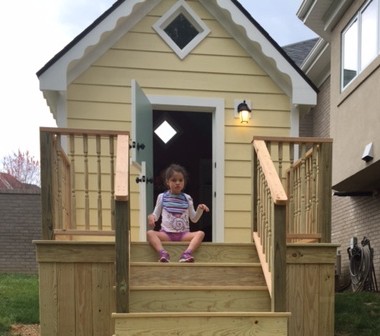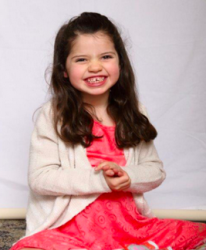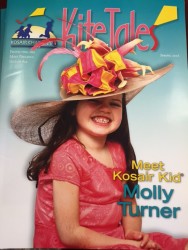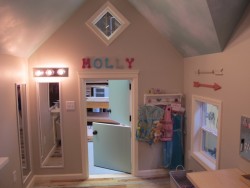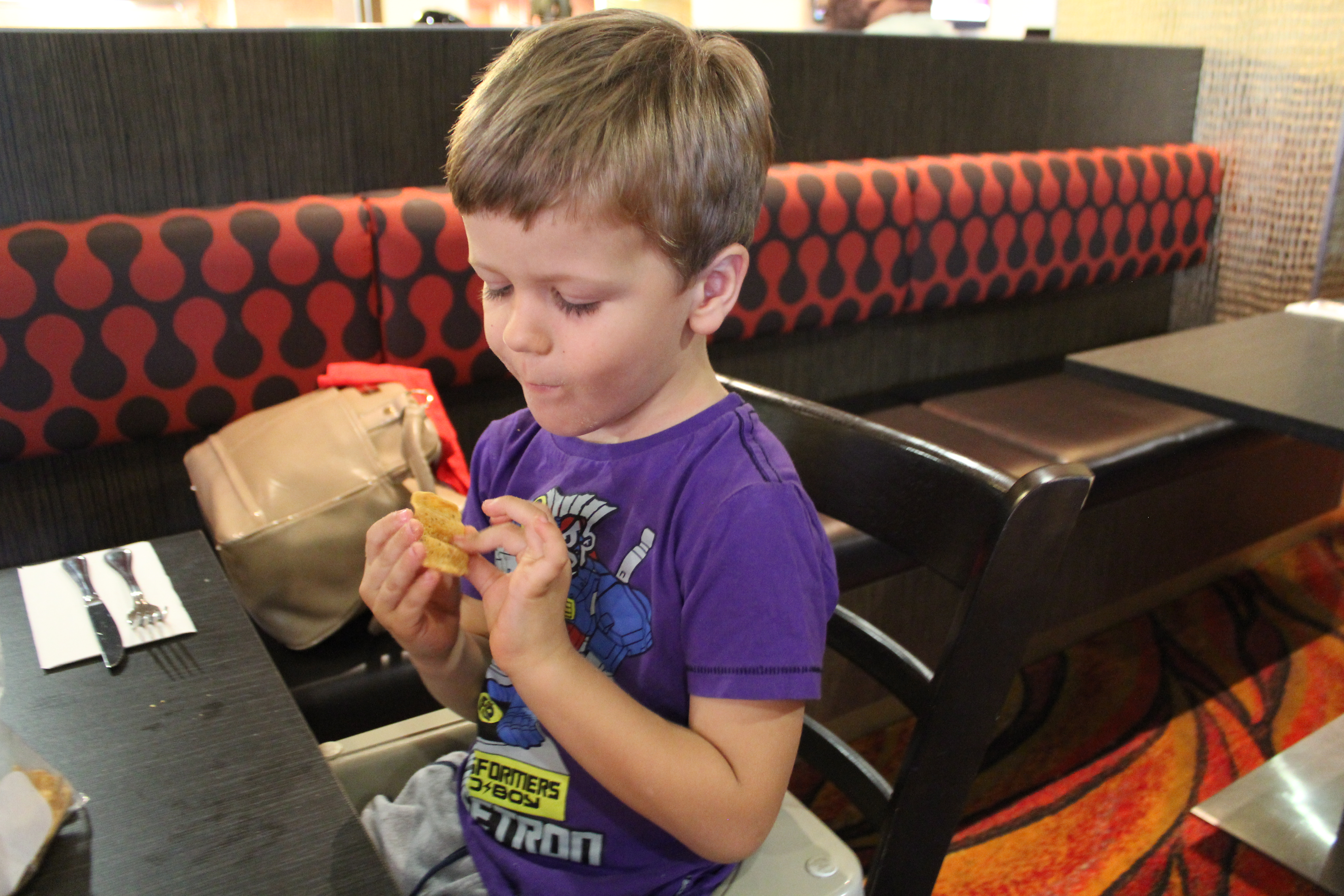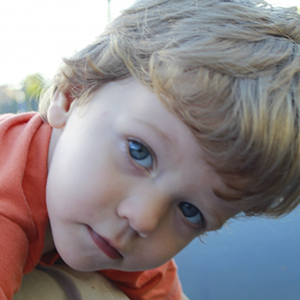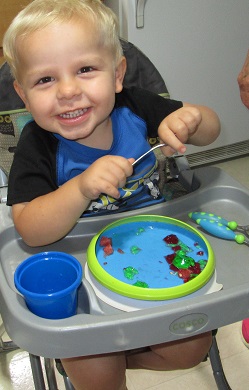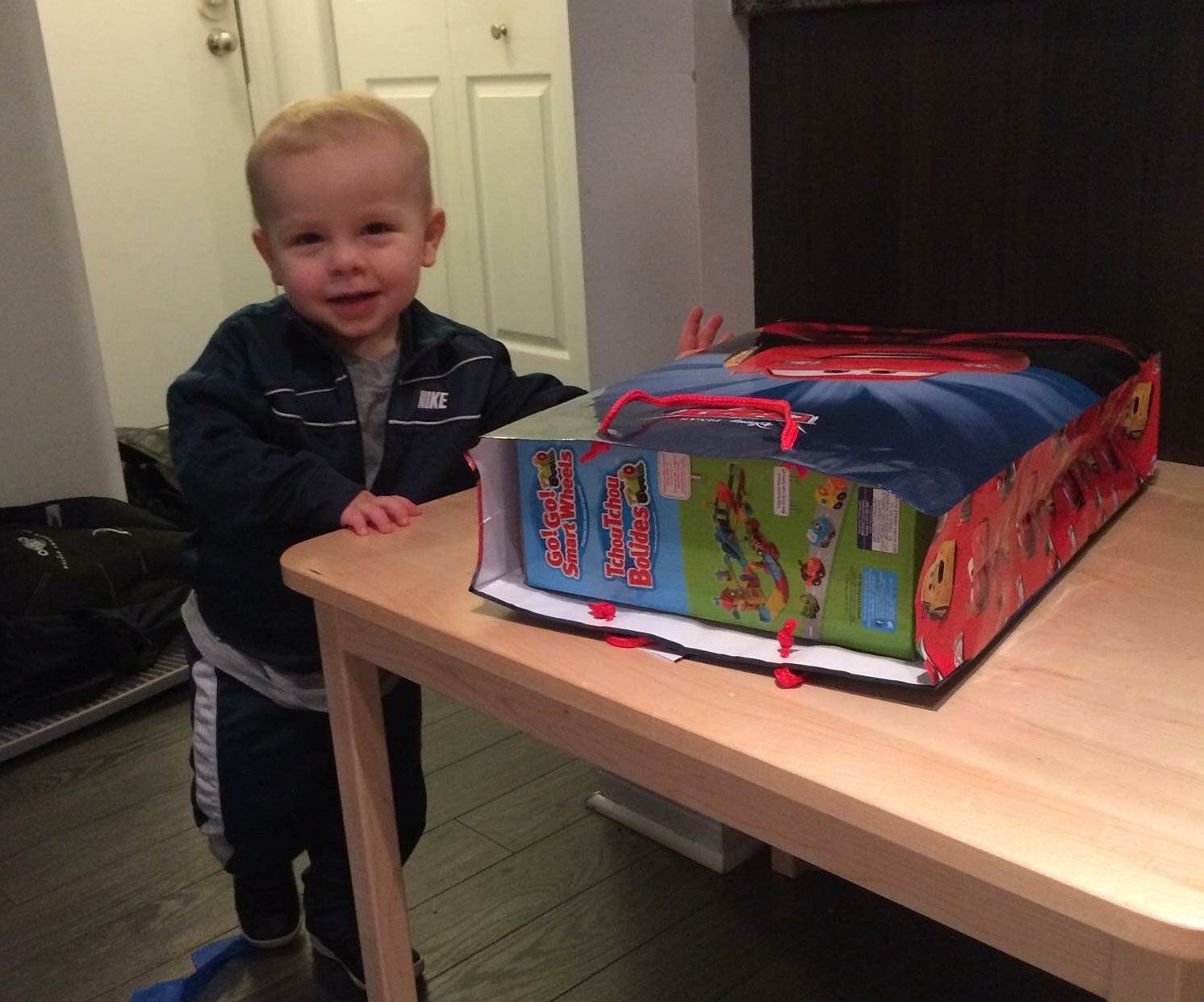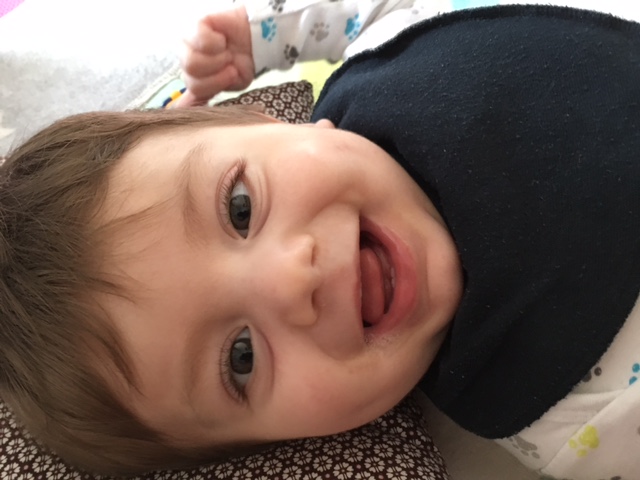
What’s up with you?
I am grateful for the opportunity to present our story on this platform and I hope that writing all this down allows us to remember this significant part of our lives and give hope and information to other parents who are in the same situation.
Sepp was born on 2nd of May 2016. He is our second child and like his sister Vroni, he was born in Trier- Ehrang, Germany. The delivery itself was uncomplicated but right afterwards we were waiting for Sepp to make a sound but nothing happened. We got an uneasy feeling and started asking questions such as, “Is everything OK with him? What’s going on?” His face appeared to be quite violet and even the calming words from the delivery nurse could not stop us from worrying. After a while, he would start to whimper and we were allowed to hold him; however, the uneasy feeling would not disappear. When I held him in my arms for the first time, I asked him: “Sepp, what’s up with you?”
Eventually, we calmed down and tried to enjoy this great moment, also because the color of his face gradually started to become normal. Nevertheless, anxiety remained in the back of our minds.
When they took him to our room, we swaddled him in the hope this would give him comfort, as we knew his sister used to like it.
 When speaking to people during my pregnancy and telling them that I was expecting a boy, they told me that I should expect him to have tummy ache – apparently, boys suffer from tummy ache more often than girls do. I discounted this as an exaggeration and I didn’t think much of it.
When speaking to people during my pregnancy and telling them that I was expecting a boy, they told me that I should expect him to have tummy ache – apparently, boys suffer from tummy ache more often than girls do. I discounted this as an exaggeration and I didn’t think much of it.
However, it started the very same evening: when he had to do his business and as generally known, it was all sticky and a considerable amount for such a small baby. At this moment, the paediatric nurse was with me and she suggested giving him a bath. I liked the idea and agreed. After the bath, for the first time, Sepp made a strange movement and the nurse asked me if he had done this before. I said no but also mentioned that he had been swaddled and hence been unable to move. Shortly afterwards, he did the same movement again. I thought that he might be doing his business again and this is what it actually was. Therefore, I dismissed the strange movement as his effort to strain. The next day went by normally: trying to get some rest, feeding and observing the baby. Sepp had been swaddled at all times and in retrospect, we surely missed some of his spasms.
In the evening, Sepp was due for a hearing test. During the examination, we again noticed these “strained movement patterns” much to the dislike of the nurse. So a doctor has been called in but she was also at a loss with the situation and upon our insistence, she consulted with another hospital. Sepp was then taken to the intensive care unit at the next larger hospital (Mutterhaus in Trier).
Meanwhile, Sepp’s spasms were significantly more distinct and regular and the doctors tried to get them under control. From venesection, blood drawing, Tavor (Lorezepham), Dormikum, Keppra, Luminal, they tried everything but all with no effect.
Sepp continued to suffer from spasms every 30 minutes! Checking the clock became quite a painful matter.
Findings from the EGG were bad and we were unsure what this meant. Sepp was taken for a MRI and a CT scan and again an EEG. All those tests were so time consuming and Sepp continued to have convulsions.
Since there were a couple of public holidays at the beginning of May, we decided to take Sepp to the University Hospital in Heidelberg to be able to continue with the diagnosis and to benefit from their experience with a supposedly unknown disease.
Toward some answers
So seven days after his birth, Sepp was on his way to the third hospital. After arriving there, we felt in good hands and further examinations were conducted immediately. We were assigned to Dr. Ziegler and we thank God for that.
Connect with your KCNQ2 family at the KCNQ2 Family Roundtable this summer! Click here for details.
After several tests and drug administration, on his tenth day for the first time, Sepp did not suffer from any spasms. However, the EEG was still showing disastrous results and Dr. Ziegler made an initial diagnosis: KCNQ2. He took another blood sample and sent it to a genetics lab for evaluation. It took six weeks before the results became available. Meanwhile, Sepp was recovering well and on the 16th day, we could take him for a walk. The results from the EEGs were still poor but showing a positive trend.
One week had passed without any spasms and we were supposed to take him home. He was still very weary and weak though. The initial medication included B6 and pyridoxal5phosphate, which were supposed to be removed from the medication, as they did not show any effect.
Shortly afterwards, Sepp`s condition was gradually deteriorating. He was breathing heavily and the level of CO2 in his blood started to increase. On the 19th day, the situation became critical: he needed to receive supplemental oxygen and had to be taken back to intensive care. His lungs were x-rayed and they found a shadow on his lungs even though there had been no sign of increased inflammation values. Since he was breathing abruptly, the doctors’ assumption was that his lungs must have filled with either milk or liquid meds.
For days, the CO2 level continued to increase and so we had no other choice but ventilation through CPAP (“continuous positive airway pressure”). To make matters even worse, the spasms returned.
For the respiration, CPAP was now not sufficient any longer and he had to receive artificial respiration. Also, the results from the EEGs worsened again.
On the 21st day, B6 was re-introduced in the medication but only for experimental purposes, as there would have been no explanation if it actually did work. However, it worked and the spasms lessened. On the 26th day, Sepp was able to breathe freely again, without the help of artificial respiration. Once again, he was recovering well.
Unexpectedly, on the 30th day, we were moved to another hospital near our home in Trier while waiting for the report from the genetics lab.
While waiting, Sepp fell ill with pneumonia but the spasms were abating.
On 20th June 2016, six weeks after his birth, we received the final diagnosis: KCNQ2.
The nurses prepared everything for us so that we could finally take Sepp home. We got a surveillance monitor and were trained in first aid measures and for the use of the emergency medicine. Sepp also got his first vaccination done and we had further intensive discussions with neurologists, pediatricians and geneticists.
Meanwhile, our requests for domestic aid and from the child protective services had been rejected but we didn’t worry about that too much. Our main goal was to get Sepp home.
We did receive support though from a local after treatment-center who provided psychological support, and we received help from a nurse. A caseworker was also assigned to us.
At home with KCNQ2
After a couple of weeks we got into a certain routine and we met with the Rentergent family and their son Lars. We were very pleased about this meeting. We spent a lovely day together, received various information and gathered many impressions.
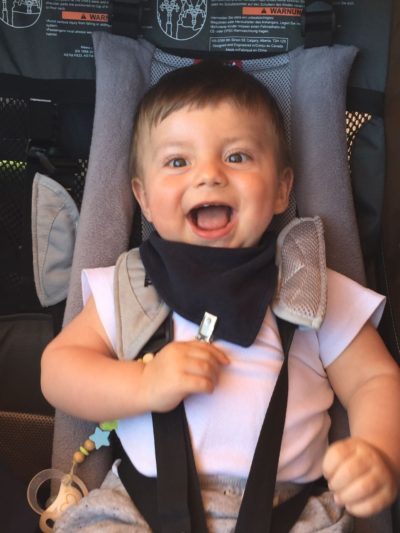 In the meantime, Sepp was being continuously monitored and controlled: EEGs, blood samplings and medical examinations. All examination results were send to Dr. Ziegler in Heidelberg who determined all further proceedings in collaboration with Dr. Petersen in our local hospital in Trier.
In the meantime, Sepp was being continuously monitored and controlled: EEGs, blood samplings and medical examinations. All examination results were send to Dr. Ziegler in Heidelberg who determined all further proceedings in collaboration with Dr. Petersen in our local hospital in Trier.
We discontinued using some of the meds that have proven to be of no benefit: Phenobarbital, Pyridoxal5Phosphat (whereas B6 was still being used) and lastly Keppra. We reduced from 5 different meds to 2 and from 4 times a day to 3 times. This made things a lot easier but all together a whole lot to do and to consider and one would not believe how hard you struggle to get certain things done.
When we heard about Summit we knew that one of us would have to join. This was an irreplaceable experience for us and we were thankful for the opportunity to meet up with other families.
Around Christmas time, we also met with Anna and Sanna and their families. A great get-together and it was encouraging to know that we are not the only family in this situation.
Sepp was also doing better, which means there were no more spasms and he integrated himself into our daily life. He even didn`t mind car drives and being pushed in the baby pram anymore. He laughs a lot, and loud noises and hectic movements do not bother him anymore. His hands started to open up and he is practicing to grasp. He started teething and we had many sleepless nights. Over a period of six weeks, he has been coughing while nursery school was about to start. Unfortunately, Sepp fell ill with pneumonia and had to be taken back to hospital. With a two-week delay, he could finally join nursery school.
We just spent our first vacation and had a lovely time together. We look positively into the future and make the most of each day.
At this stage, I would also like to thank a number of people but the list would grow too long. In general, we received great support from our friends, families and people that became friends. Whether it`s been big or small gestures each and every single support of whatever form was greatly appreciated. Everybody is to be thanked for this–you guys are awesome.
Our warmest regards to all the other KCNQ2 families out there. We are proud to be a part of this community.
SEPP U VRONI , SIMONE UND BASTI

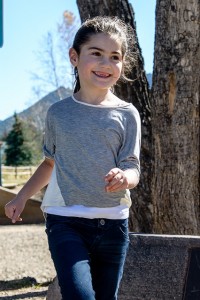
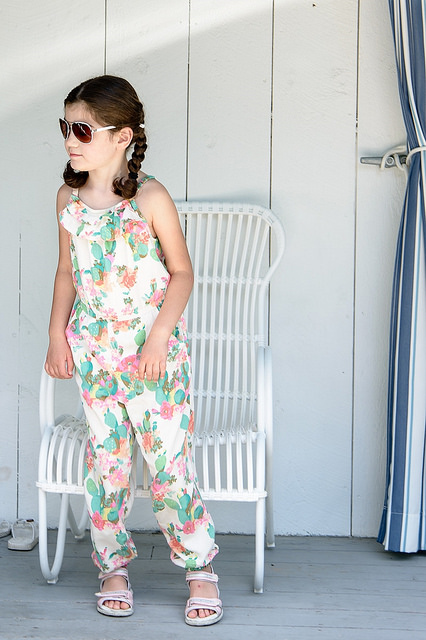 Life with Gillian is unpredictable. As an infant we parented Gillian much in the same way you would any other baby but with the added worry of managing her meds. As she began to grow her inconsistent sleep patterns resulted in severe temper tantrums. This combined with Gillian’s inability to communicate her needs made life difficult at times. Although she is still nonverbal her receptive communication is fairly good and she is better able to understand what we say. Her expressive language is also coming along and we have begun using an iPad to help her communicate.
Life with Gillian is unpredictable. As an infant we parented Gillian much in the same way you would any other baby but with the added worry of managing her meds. As she began to grow her inconsistent sleep patterns resulted in severe temper tantrums. This combined with Gillian’s inability to communicate her needs made life difficult at times. Although she is still nonverbal her receptive communication is fairly good and she is better able to understand what we say. Her expressive language is also coming along and we have begun using an iPad to help her communicate.